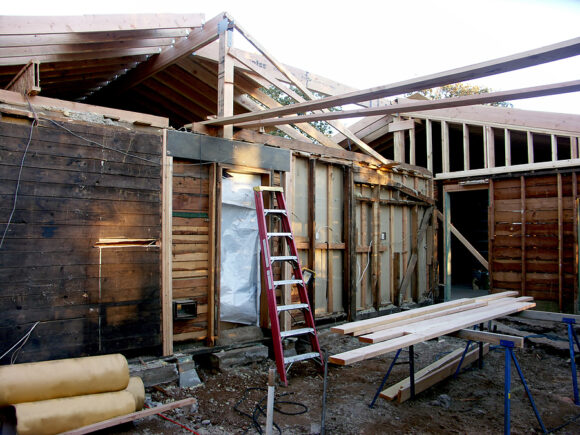Replacement costs increased by more than five percent between April 2014 and 2015, said Greg Pyne, assistant vice president of Pricing Data Services at Xactware, a Verisk Insurance Solutions company.
Pyne outlined the factors that influence reconstruction costs during a webinar this week: Recent Trends in Replacement Cost Estimation. These include:
- Supply and demand. When commercial construction is booming, this can impact residential construction jobs.
- Catastrophe losses can cause a demand surge. For example, after the 2005-2005 hurricane season, there was a surge in demand. Demand for gypsum board, lumber, plywood, copper and fuel may rise after a catastrophe.
- Changes in commodity prices. Certain products that are petroleum-based like asphalt shingles can increase in cost if oil costs rise. Fuel impacts several areas of construction. For example, fuel is needed to get material to job sites and to vendors as well as to operate heavy equipment.
- New building materials and techniques. Building code changes and new construction techniques can increase or decrease costs.
The Xactware executive said that the company uses three methods to research and update reconstruction pricing:
- Real time feedback from 50,000 contractors, 18,000 independent adjusters and 24,000 carriers it counts as users.
- Bottom up method through an independent material and labor survey.
- Top down method by analyzing actual settled claims. The company sees 4 million claims annually.
Carriers can expect to see higher replacement cost estimates in the second quarter of 2015, said Pyne. Replacement costs increased by more than five percent in 44 states between April 2014 and April 2015. This much growth hasn’t been seen since 2006, he said.
Nationally, reconstruction costs increased by 5.3 percent.
 The reconstruction economy is showing strong signs of growth, with increases in both labor and material, he said.
The reconstruction economy is showing strong signs of growth, with increases in both labor and material, he said.
The top three areas that experienced rising costs to key construction materials occurred in the drywall, lumber and roofing trades. Overall, material costs increased 2.8 percent.
Changes in costs to key labor trades was also noted, the top three trades that showed the most dramatic increases were carpenter/framer, roofer and electrician. Overall labor costs increased 1.8 percent.
Between April 2013 and April 2015, market value has declined as replacement costs have trended up.
Pyne outlined the states with the biggest increases in reconstruction costs during the past three years:
- Idaho – over 15.5 percent increase
- North Dakota
- New Hampshire
- New York
- Wyoming
- Massachusetts
- South Dakota
- New Mexico
- Montana
- New Jersey – 13.5 percent increase
Was this article valuable?
Here are more articles you may enjoy.


 Toyota Unveils Concept LFA Supercar, and It’s Fully Electric
Toyota Unveils Concept LFA Supercar, and It’s Fully Electric  Tricolor Trustee Plans to Sue Founder for Auto Dealer’s Collapse
Tricolor Trustee Plans to Sue Founder for Auto Dealer’s Collapse  ‘Dream Is in Sight:’ Chamber, Reinsurers, Insurers Urge Florida to Stay the Course
‘Dream Is in Sight:’ Chamber, Reinsurers, Insurers Urge Florida to Stay the Course  Atmospheric River to Flood Pacific Northwest Through Week
Atmospheric River to Flood Pacific Northwest Through Week 